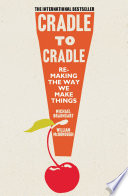

One of the fundamental concepts of 'Cradle to Cradle' is the idea that waste should not exist in a sustainable system. Instead, everything should be designed to either return to the earth safely or be reused indefinitely. This concept emphasizes a circular economy where products are made from materials that can be perpetually cycled through the environment without causing harm. The authors argue that the traditional linear model of 'take, make, dispose' is flawed and unsustainable. By redefining waste as a resource, we can create systems where materials are continuously repurposed, leading to reduced resource consumption and environmental degradation.
Continue readingThe book advocates for designing products that can be easily disassembled at the end of their life cycle. This approach allows for the recovery of valuable materials, which can then be reused in new products. By designing with disassembly in mind, manufacturers can ensure that their products do not end up in landfills but instead contribute to a regenerative system. This idea challenges the traditional manufacturing mindset, which often prioritizes short-term profit over long-term sustainability. The authors provide examples of companies that have successfully implemented design for disassembly, showcasing its feasibility and benefits.
Continue readingAnother key idea presented in 'Cradle to Cradle' is the importance of utilizing renewable energy sources in manufacturing processes. The authors argue that reliance on fossil fuels is not only unsustainable but also detrimental to the environment. By shifting to renewable energy, such as solar or wind power, companies can reduce their carbon footprint and contribute to a healthier planet. The book emphasizes that the transition to renewable energy is not just an environmental imperative but also a business opportunity, as it can lead to cost savings and innovation in energy technologies.
Continue readingThe authors distinguish between eco-efficiency and eco-effectiveness. Eco-efficiency focuses on minimizing negative impacts, such as reducing waste and pollution, while eco-effectiveness is about creating systems that are inherently beneficial to the environment. The book argues that merely being eco-efficient is not enough; we must strive for eco-effectiveness, where products and processes contribute positively to the ecosystem. This shift in mindset encourages innovation and creativity in product design, leading to solutions that enhance human and environmental health.
Continue readingMaterial health refers to the safety and sustainability of the materials used in products. 'Cradle to Cradle' emphasizes the need for manufacturers to select materials that are non-toxic and safe for both human health and the environment. The authors advocate for transparency in material sourcing and encourage companies to prioritize the use of safe, sustainable materials in their products. This focus on material health not only benefits consumers but also fosters a culture of responsibility among manufacturers, leading to a more sustainable industry overall.
Continue readingThe book discusses the critical role that businesses play in driving sustainability initiatives. The authors argue that companies have the power to influence change through their supply chains, product design, and corporate policies. By adopting a cradle-to-cradle approach, businesses can lead the way in creating a sustainable future. The book provides case studies of organizations that have successfully integrated sustainability into their core operations, demonstrating that profitability and environmental responsibility can go hand in hand.
Continue readingFinally, 'Cradle to Cradle' calls for a new paradigm of innovation that prioritizes sustainability in every aspect of product development. This involves rethinking traditional design processes and embracing a holistic approach that considers the entire life cycle of a product. The authors encourage designers, engineers, and entrepreneurs to challenge the status quo and explore new ways of thinking about materials, energy, and waste. By fostering a culture of innovation that embraces sustainability, we can create products that not only meet consumer needs but also contribute positively to the planet.
Continue reading